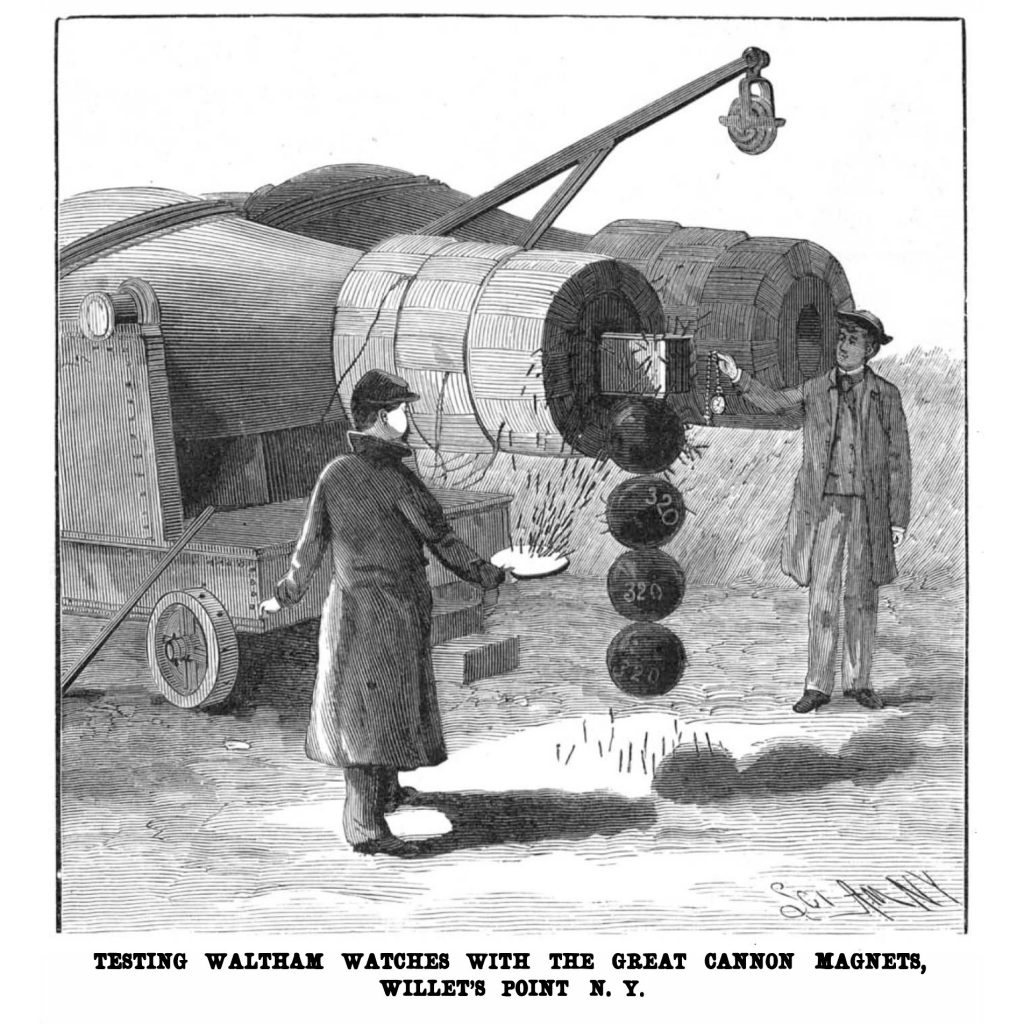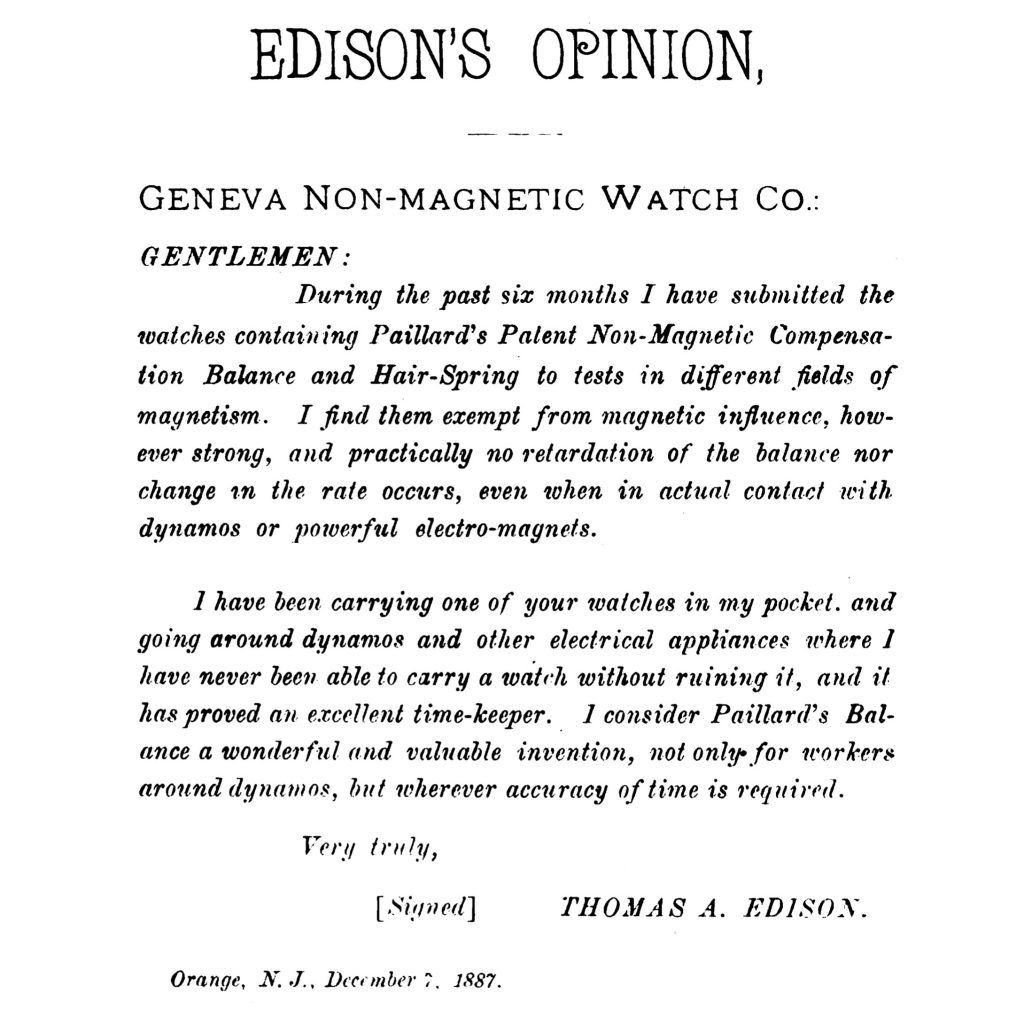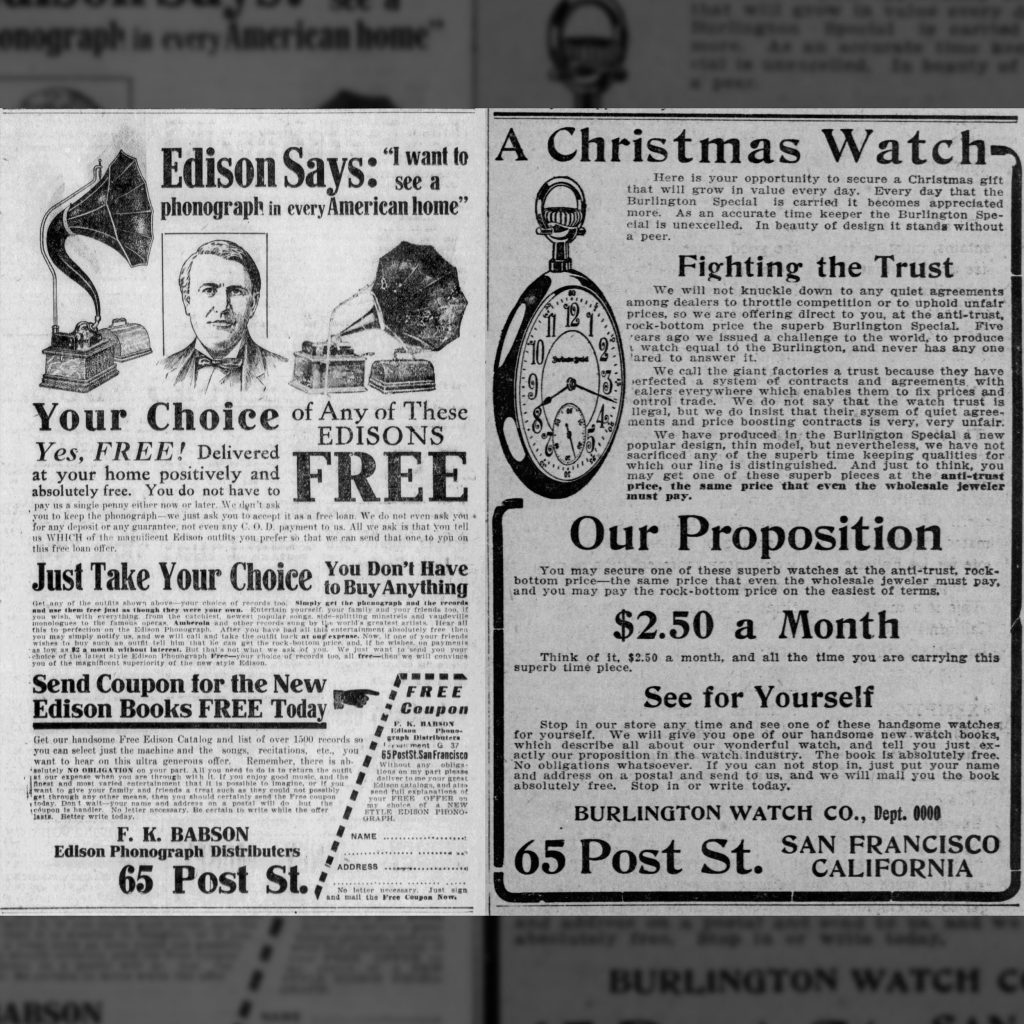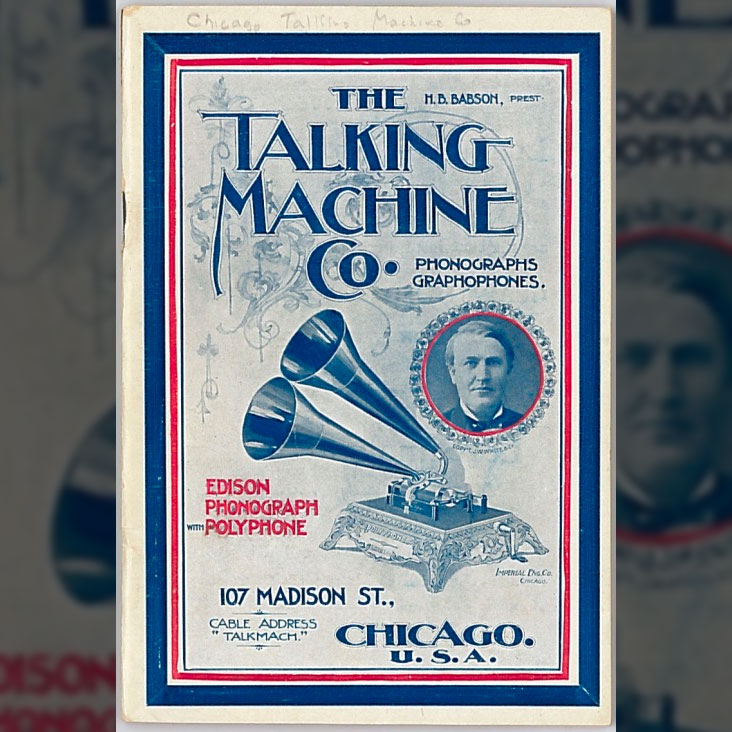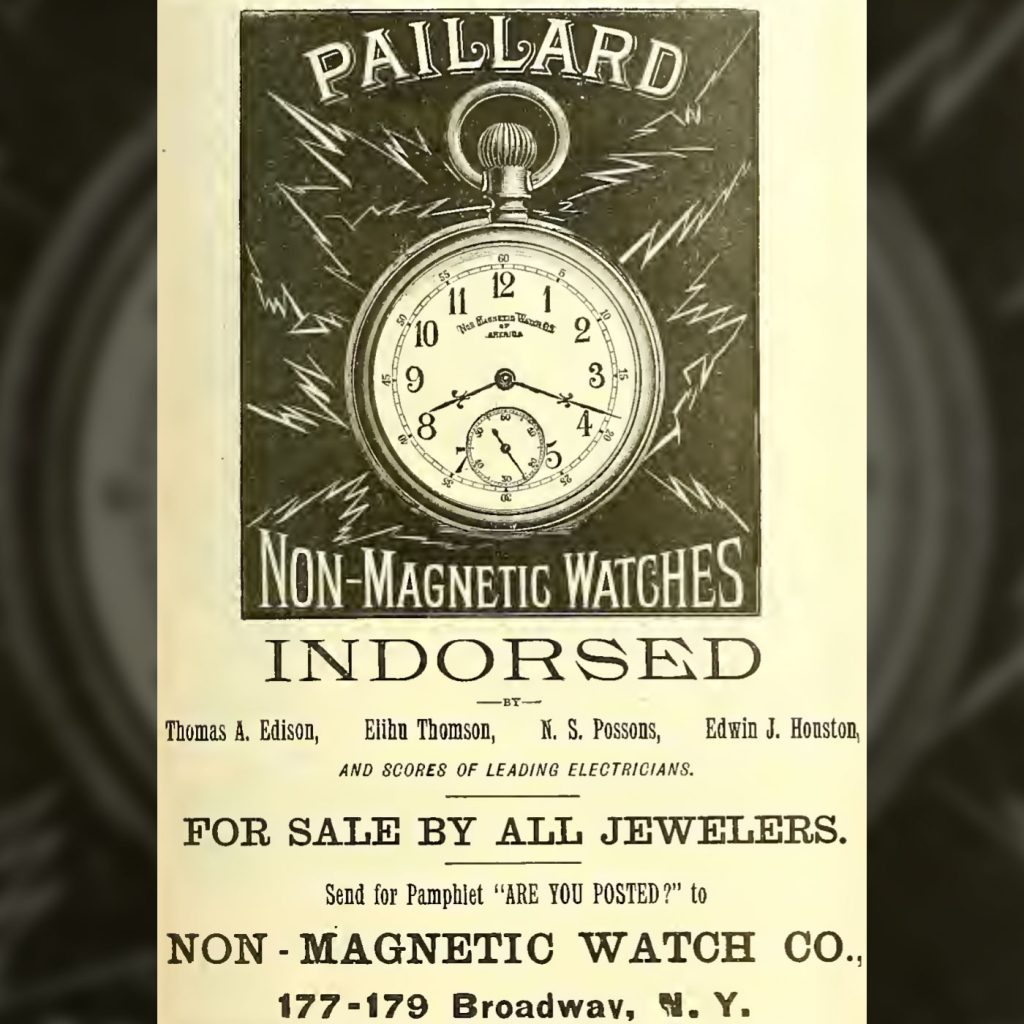
Thomas Edison

Pictured: “Testing Waltham Watches with the Great Cannon Magnets, Willet’s Point N.Y.” - Scientific American, April 14, 1888. Following Thomas Edison’s endorsement praising the Non-Magnetic Watch Company’s watches, Waltham fired.
Pictured: Thomas Edison’s Endorsement of the Non-Magnetic Watch Co., Locomotive Engineers’ Monthly Journal, February 1888. The American Waltham Watch Company introduced a non-magnetic watch to compete with the Non-Magnetic Watch.
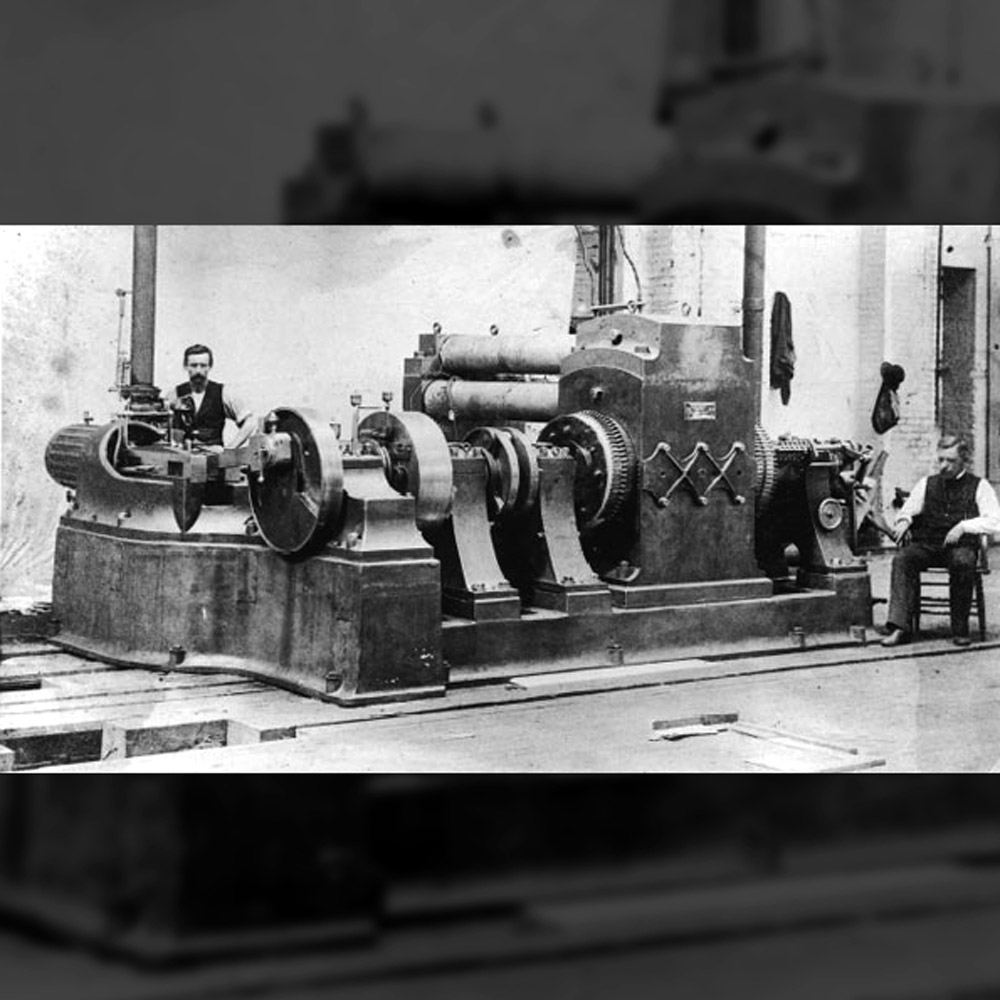
Pictured: Edison Phonograph Advertisement by F.K. Babson [The Berkeley Gazette, March 6, 1911] and Burlington Watch Advertisement by Burlington Watch Co. [The San Francisco Call, December 21, 1911]. Starting October.
Pictured: Cover, The Talking Machine Co. Catalog, c.1898. The development of the Burlington Watch Company by Henry, Fred, and Gustavus Babson resulted from a series of events originating from the.

